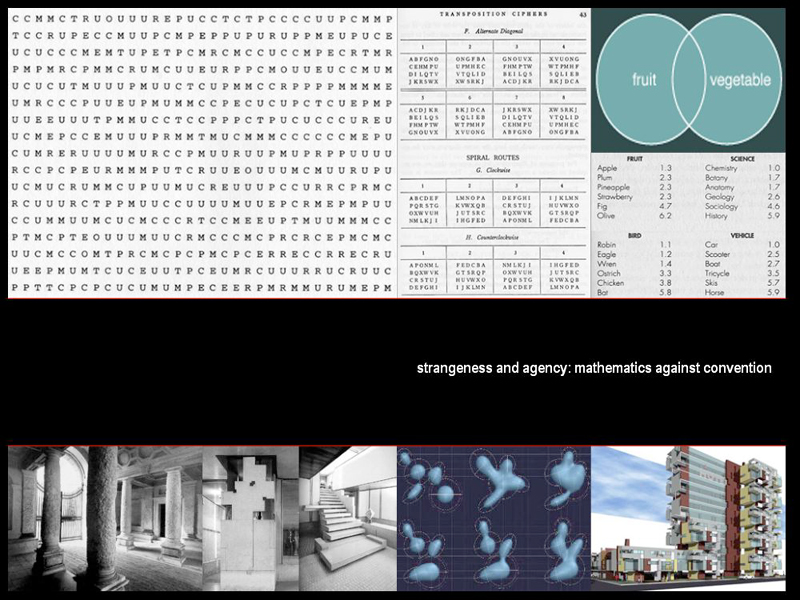
1. Introduction
The issues of strangeness, purpose, and intention in architecture are increasingly problematized by advances in both the techniques of modeling and the theorization of computing by architects. One of the major questions I think could be asked while engaging problems of architecture and computation is whether one takes the position of the experimentalist or the avant-garde. In other words, does one explore conventions in order to problematize them or does one attempt to figure the "new." Cryptography is, for me, a model for the experimental approach because it is about the reorganization of conventional materials by replacing the rules that govern convention with rules that uproot it. If mathematics replaces grammatical rules here then the organization of parts is free to permute an overall field of information that could be understood as iterative rather than fixed, information rather than meaning, one state of organization out of many. The images below demonstrate iterative understandings of architecture as a collection of states that can be contained within a single architectural complex: Romano with material-becoming-language, Scarpa with the formulation of history-language-material, Greg Lynn with formation-over-time, and Mark Rakatansky with identity-over-iterative-category. These projects always recall to me Bertrand Russell's philosophical problem of vagueness. Vagueness is, in the end, a problem of categories or, let's say, the impossibility of stable relationships among categories and objects. As Russell notes, vagueness is a problem of representation and not of objects. In other words, the flexibility of physical material will always elude techniques of representation to the extent that conventions of knowledge like classical set theory, a mixture of mathematics and language, begin to fail. In its place would then be recent lines of thought such as fuzzy logic which offer a more fine-grained, iterative, and flexible way of mathematicizing language in order allow for mixtures of categories that provide lessons for architecture - a field that is becoming less about resolution and more about the intensification of mixture.